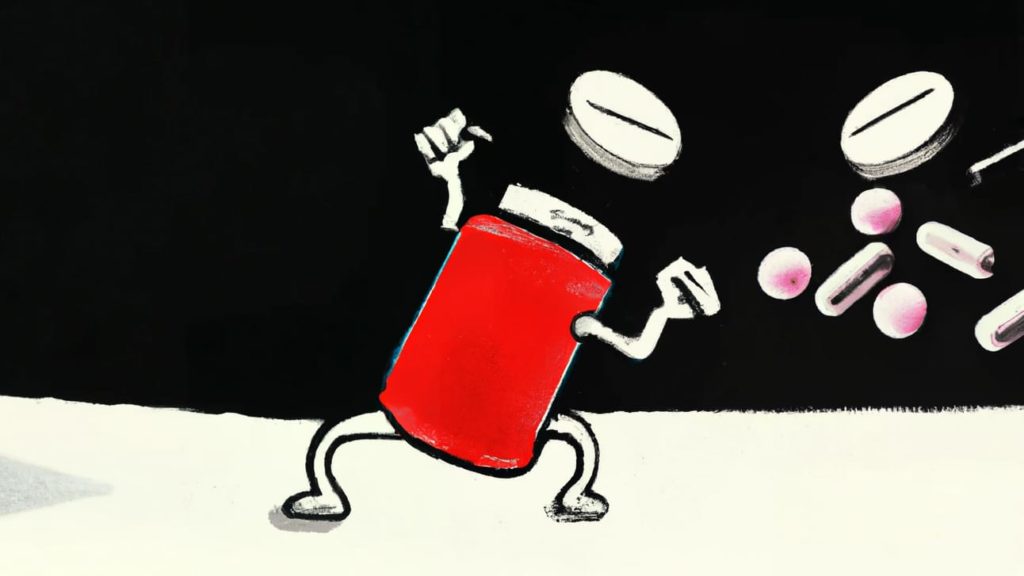My goodness. 2024 already. For a lot of us, that means a scramble to get situated before the J.P. Morgan Healthcare conference begins this weekend. If you’re headed to SF, drop me a line … I’d love to say hello.
Turns out college football is a lot more exciting than the final round of Cost Curve Fight Club: in the end, the “10 Selected Drugs” under the IRA easily held off “Leqembi’s launch,” grabbing 72.2% of the vote.
In fact, I erred when I first put up the poll, including — as a third option — the growth in the 340B program. Two of the first three votes were actually for 340B, but even counting them for Leqembi wouldn’t make much of a difference.
So there you have it, straight from the Cost Curve readership: 2023 was the year of the Inflation Reduction Act.
There is a contrarian take here, to be sure, that says that the 10 medicines selected weren’t really a surprise, and it’s not clear what kind of an impact the IRA will have in this first year. It’s a take that I have a lot of sympathy for. But as the first step in a re-thinking of the government’s place in the marketplace, it’s hard to argue against the IRA as the story of the year.
If you were blissfully unplugged last week, know that news continued to squeak through, and I noted some highlights in my newsletters on Tuesday, Wednesday, Thursday, and Friday. The continued evolution of the legal positioning around copay accumulators was, perhaps, the most important.
The other big story was a Reuters look at some of the Jan. 1 price hikes. It was kind of a “meh” story for the same reason that so many price hike stories are “meh”: it doesn’t talk much about specific medicines or specific increases, making it just kind of a ritualistic kicking of pharma in the shins.
Indeed, the bigger story is the Jan. 1 price decreases, which Reuters mentioned in this story and CNN hit harder in this one, particularly around insulin.
These are the long-promised price cuts, which reflect both a desire to address affordability and a response to incentives around the Medicaid Drug Rebate Program (as of Jan. 1, companies will have to pay Medicaid every time certain drugs are prescribed).
But most of the patients who use insulin and the other drugs affected won’t see their price at the pharmacy counter change very much. There are exceptions, and this is an important milestone for those individuals. Still, for the most part, this story manages to sit at the nexus of policy and supply chain and reputation and media interest without actually impacting patients.
In that way, this is an interesting test run for the imposition of price controls for those first 10 selected medicines. My assumption is that for most of those medicines, consumers will see little impact, given that many of those medicines already have big rebates, so the giant “price cuts” that Biden will announce in September will mostly have the effect of getting the public negotiated price down around the existing net price.
In that sense, the insulin price cuts should be illuminating, both in how patients respond to them as well as how the media and other stakeholders think about them.
There is a second set of price cuts that is also illuminating.
The Wall Street Journal has a great piece about what seemed like a clever move by GSK to get around the Medicaid cuts: it removed Flovent from the market and introduced an authorized generic at a discounted price.
But here’s the rub: even though the generic Flovent carries a lower list price, PBMs said that it represents an increase over the post-rebate price of the brand name, so … they’ve refused to cover it. That’s leaving consumers scrambling, especially parents, because the Flovent inhaler works better for some kids.
So it’s Jan. 2, and PBM games are already messing things up for consumers.
And we’re not even talking about deductibles resetting.
Yet.
This STAT analysis of which parts of the health care system have the highest profit margins is useful, I guess. But different industries have different margins for very good reasons, and there is a danger that this kind of data, shorn of context, is easy to misinterpret.
This is a pretty “meh” take on march-in rights (it’s an op-ed in The Hill). Saying “march-in rights will discourage innovation” without any data that quantifies the issue only gets you so far.
As a cub reporter covering health policy at the turn of the millennium, I had plenty of chances to cross paths with Sid Wolfe, the indefatigable head of Public Citizen’s Health Research Group. He was absolutely one of a kind. He had blanket objections to almost everything put forth by the pharmaceutical industry, and his public comments during advisory panel meetings were as much a part of those events as the voting itself. He was, in many ways, an object lesson in both the power and danger of skeptical thinking. Wolfe passed away yesterday at the age of 86, and his obit is well worth the read.
If this email was forwarded to you, and you’d like to become a reader, click here to see back issues of Cost Curve and subscribe to the newsletter.





